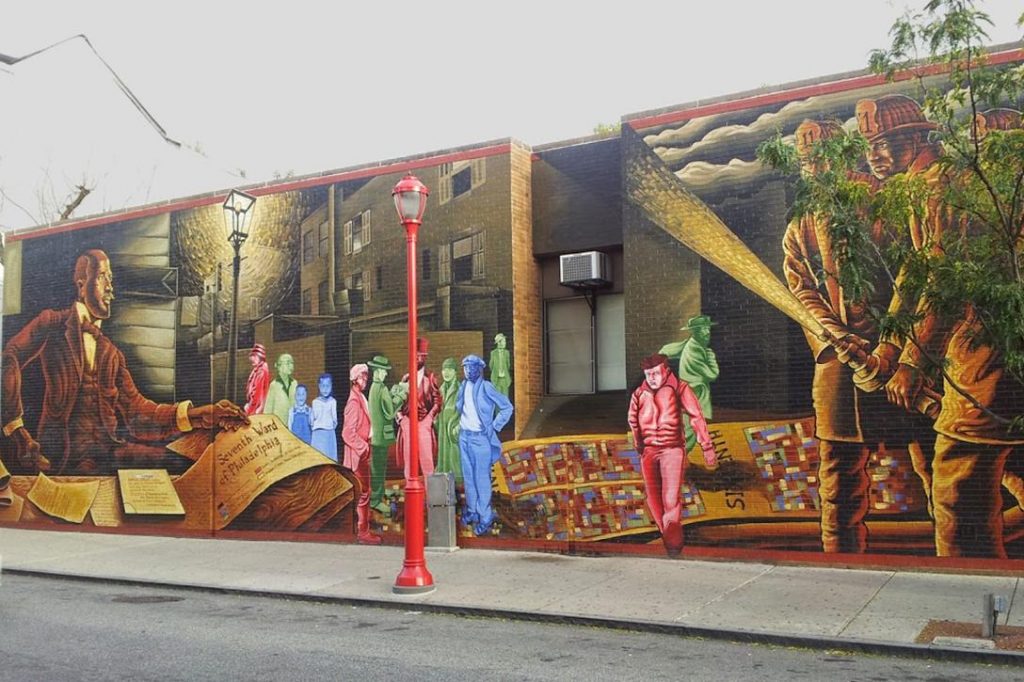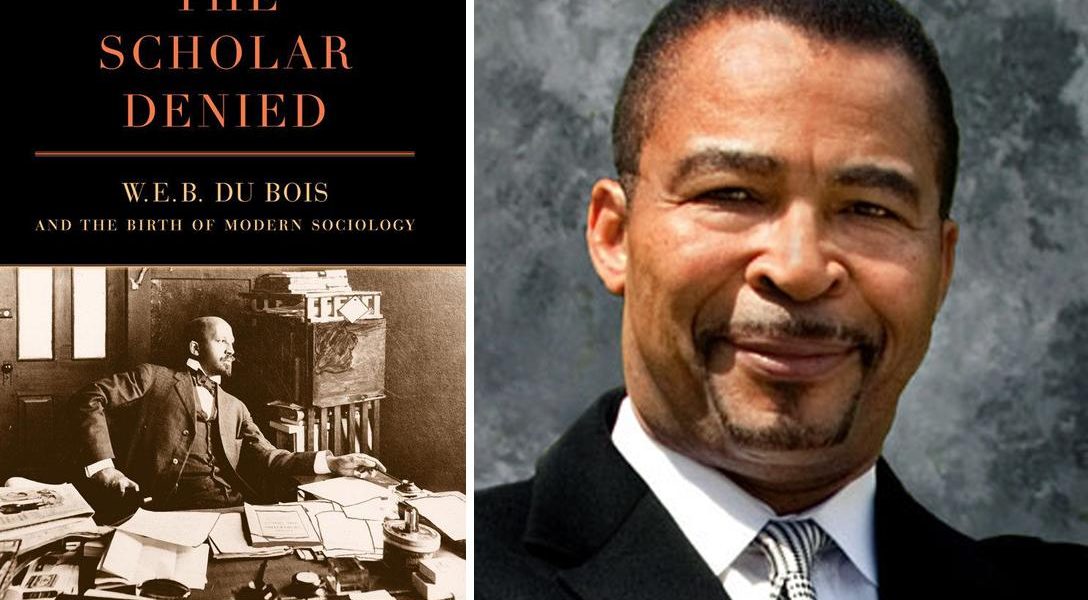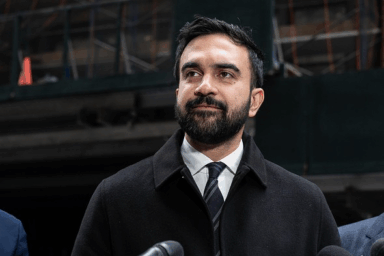A review of a book on W.E.B. DuBois, and how the white intellectual establishment kept this brilliant black scholar “in his place.”
Introduction by Milicent Cranor
Recently, The New York Times featured a story under the screaming headline “What, Congressman Steve King Asks, Have Nonwhites Done for Civilization?” It was during a panel discussion hosted by MSNBC’s Chris Hayes that the Republican from Iowa expressed these thoughts. Here are the highlights:
King: This whole ‘old white people’ business does get a little tired…. I’d ask you to go back through history and figure out where are these contributions that have been made by these other categories of people that you are talking about? Where did any other subgroup of people contribute more to civilization?
Hayes: Than white people?
King: Than Western civilization itself that’s rooted in Western Europe, Eastern Europe and the United States of America, and every place where the footprint of Christianity settled the world. That’s all of Western civilization.
After a lot of chaotic cross-talk, Hayes shut down the discussion with these lame comments:
Hayes: We’re not going to argue the history of civilization. Let me note for the record that if you’re looking at the ledger of Western civilization, for every flourishing democracy you’ve got Hitler and Stalin as well. So there’s a lot on both sides.
In response to Congressman King’s remarks, we offer the following essay as a place to start, if he really wants an answer to his question.
A review of The Scholar Denied: W.E.B. Du Bois and the Birth of Modern Sociology by Aldon D. Morris (Published by University of California Press, 2015)
Black Minds Matter. This corollary to the current “Black Lives Matter” mantra is stunningly demonstrated in Aldon D.Morris’s exposé of the many ways the dominant white sociologists in the first half of the twentieth century denied the seminal contributions of Dr. W.E.B. Du Bois to the dawning field of sociology.
In The Scholar Denied: W.E.B. Du Bois and the Birth of Modern Sociology, Morris focuses on the development of the discipline of scientific sociology.
It took top academic departments at institutions like the University of Chicago and Columbia University more than two decades to adopt the empirical investigations, with quantitatively displayed results, that Du Bois demonstrated methodologically in The Philadelphia Negro (1899) and subsequently in the Atlanta University Studies during the first decade of the twentieth century.
The refusal to address the intellectual challenge of Du Bois’s pioneering work by men regarded as the fathers of modern sociology — like Robert E. Park, Thomas Jesse Jones, Franklin Giddings and Thomas J. Woofter, Jr — is an exquisite story of white racism at the loftiest intellectual levels.
Morris carefully analyzes the gatekeeping strategies they used to deny Du Bois—the first African American Harvard PhD — an appointment at a major “white” university. He also exposes their efforts to block funding by philanthropic foundations of his research efforts at Atlanta University and publication of his articles in the newly established sociological journals.
Park’s story, in particular, illustrates how a white scholar undermined Du Bois. Both Park and Du Bois earned graduate degrees from Harvard and did advanced graduate work in Germany at a time when the empirically oriented social sciences were first developing. They studied with some of the same great minds of the era including William James, George Santayana and Josiah Royce at Harvard.
Park, recognizing that he was unlikely to have great success as a scholar during his early teaching experience at Harvard, took a position in 1905 as the public relations spokesman and ghost writer for Booker T. Washington at Tuskegee Institute.
Washington, the “Black Moses,” had tried to persuade Du Bois to take this position but Du Bois refused in order to preserve his independence and to pursue his intellectual goal to help liberate the Negro race through knowledge gained from social science research and publication.
Du Bois had already published The Souls of Black Folk in 1903 which attacked Washington’s “Tuskegee Machine” as well as prophesying that “the problem of the Twentieth Century is the problem of the color line.”
Fatefully for the emerging field of sociology, Park, a white man, served for seven years at the elbow of Washington, the most powerful black man in America, whose deep commitment to industrial education for the overwhelmingly rural and southern Negro population, appeared to buttress whites’ belief in the inferiority of blacks, seen as a primitive people, positioned beneath their white fellow citizens.
It was the era of Jim Crow and Washington’s efforts on behalf of his people accommodated the race perspectives of the most influential white men, not only in the South but in the North as well.
In his role as Washington’s spokesman, Park had occasion to joust with Du Bois who became Washington’s leading adversary when emphasizing the importance of higher, liberal arts education for the Talented Tenth among Negroes. (Du Bois assumed that the uplift of the Negro race ultimately depended on those classically educated individual–teachers, engineers, lawyers, doctors, clergymen–who would prepare the way for the rest of their brethren. They were the “Talented Tenth.”)
Du Bois’s increasing agitation for Negro rights, particularly after the Atlanta Race Riot of 1906, pushed him towards public activism, leading to the founding of the NAACP in 1909.
Under Washington’s tutelage and living amongst the Alabama black community in Tuskegee, Park acquired credibility as an interpreter of African Americans in the white scholarly world. When the University of Chicago hired him as part of its emerging and highly regarded department of sociology, he became a national authority on the American Negro.
Contemporary scholarship has appreciated the complexity of Washington as well as his extraordinary influence with the white power structure. Whatever private views he held on the comparable intellectual capacity of blacks and whites, his public stance embraced the cultural inferiority of blacks—a position that accommodated and reassured the leading white cultural, economic and political elite in the Jim Crow era.
To the white sociologists at the University of Chicago, led by Park, the transparent cultural inferiority of the former slaves was based upon their biological inferiority, thus contributing to a “scientific” justification for white racial superiority.
Du Bois ardently resisted this view, contending that whatever gap existed between whites and blacks resulted from the contrasting social conditions of the two groups. Through education, particularly of the Talented Tenth who would provide leadership to their fellow black countrymen, Du Bois confidently affirmed the equality of the races.

Coming up on WhoWhatWhy on August 5th, 2016, our podcaster Jeff Schechtman in an exclusive conversation with Aldon Morris
Du Bois conducted door-to-door empirical research in Philadelphia’s Seventh Ward, to capture, in both The Philadelphia Negro and his later Atlanta University Studies, the extraordinary experiences of a vast group of human beings moving from slavery to freedom. He studied their education, their churches, their work opportunities, their families, even their involvement in crime. In short, Du Bois studied blacks first hand, capturing their progress as well as identifying formidable barriers facing them in a nation that insisted on the supremacy of white people.
***
Morris’s book provides a rich analysis of the debate among leading sociologists over racial differences between blacks and whites. He explores the important friendship and intellectual relationship between Du Bois and the great German sociologist, Max Weber, first developed during Du Bois’s student years in Germany in the early 1890s. Both were steeped in the social science research approach of the German Historical School of Economics, using both qualitative and quantitative methods, relying on statistical and mathematical analyses of empirically developed data. These scientific techniques would not characterize sociological research in major American universities like Chicago until well into the 1920s.
Du Bois, contrary to prevailing interpretations, was not a student of Weber’s but a colleague and friend. Morris conclusively demonstrates how Weber sought from Du Bois an intellectual handle to understand how racial and ethnic differences in America belonged to the cultural, and not the biological sphere.
Interestingly, they reconnected in St. Louis during the scientific proceedings of the 1904 International Exposition — to which Du Bois was not invited to participate.
At Atlanta University Du Bois founded the first school of scientific, inductively-based sociology in America during the first decade of the twentieth century. While Du Bois was doing his pioneering work, the focus of leading white sociologists was entirely different: the production of a deductive sociology based on an organic notion that blacks constituted a separate race, a “nation within a nation” to use Washington’s phrasing.
They sought to discover universal laws governing human societies and embraced social Darwinism as well as eugenics. Robert Park’s position is emblematic. “Park’s sociology of races,” Morris observes, “portrayed blacks as inferior culturally and biologically. They were prisoners of the workings of a predetermined race relations cycle that changed gradually and was not amenable to human intervention. Moreover, blacks lacked agency to overthrow oppression because they had no cultural past and were burdened by a fixed biological temperament that rendered them loyal to their oppressors.”
Morris concludes that, in concert with Washington, “Park viewed militant black leaders and intellectuals, such as Du Bois, as misdirected agitators meddling with social processes that had evolved according to their own inner logic.”
In the first number of the American Journal of Sociology in 1904, the Englishman Francis Dalton’s article, “Eugenics: Its Definition, Scope and Aims” appeared. Dalton sought to provide a scientific theory on the inferiority of Negro races. In the first major sociology textbook, initially published in 1921, Introduction to the Science of Sociology, by Park and Ernest Burgess, Dalton’s article on eugenics was reprinted.

Photo credit: Library of Congress / Wikimedia, Google Books / The Negro in the New World
And there is no substantive mention in this dominant sociology textbook of W.E.B Du Bois. As he had done when allied with Washington during Du Bois’s days at Atlanta University, Park, working from his base at the University of Chicago, continued to use his influence to steer foundation support away from Du Bois’s scholarly efforts.
Despite this persistent academic “blackballing,” Du Bois built at Atlanta University what Morris calls a nonhegemonic scientific school. And he did it without significant outside financial help. It was supported by liberation capital, and dependent on “volunteer or nominally paid labors in research and other scholarly activities” seeking “to challenge the intellectual foundations of oppression.”
The goal was to demolish the pervasive belief in black inferiority by revealing knowledge about the Negro population, based upon scientific research, to demonstrate to the American public the inherent equality between whites and blacks.
In the process he helped train the first professional black sociologists, including Monroe Work, Richard R. Wright, Jr., Edmund Haynes, Lucy Craft Laney and Augustus Dill, as well as Mary White Ovington.
“You must make a way out of no way” became the modus operandi at Atlanta University. The empirical, quantitative research techniques they developed under Du Bois’s leadership and which he had discovered and put into practice for his Berlin dissertation in the early 1890s, would not become current in American sociology until the 1920s.
Du Bois, Morris concludes, “pioneered the first scientific school of American sociology.” This school was suppressed, Morris argues, “because of the racism of mainstream white sociologists and white supremacist views generally. The ideological and material roots of racism were at odds with the message of the Du Bois-Atlanta school, which argued that social conditions, rather than black inferiority, were the causes of racial inequality.” Morris shows that this position contributed to the efforts of the anthropologist, Franz Boas, to discredit the notion of “race” as a scientific concept.
When Du Bois left Atlanta University, he extended his activities by helping to found and direct the NAACP. There, he pursued his liberation strategy for black Americans through his editing of The Crisis magazine. Du Bois’s scholarly work continued along with his literary and polemical writings.

The determination of Park and other professional scholars to block Du Bois did not cease. Morris declares that “white scholars and philanthropists denied Du Bois a seat at the high table of scholarship” which proved pivotal to the eventual production of Gunnar Myrdal’s classic, An American Dilemma: The Negro Problem and Modern Democracy in 1944. It became, Morris concedes, “the most comprehensive study of blacks and race produced at the time.”
Prior to this critically important project, Du Bois had worked to develop an Encyclopedia of the Negro. The ambitious Encyclopedia effort began in earnest in the early 1930s when Du Bois was breaking with the NAACP over disagreements on the best direction for the leading African American civil rights organization.
Morris acknowledges how controversial Du Bois had become even among his NAACP colleagues for his outspoken advocacy, including what some regarded as his increasingly Marxist views. The tension between Du Bois and white scholars, who represented themselves as the authorities on the Negro, proved a major obstacle in securing foundation funding for the Encyclopedia.
By 1932 the Phelps-Stokes Fund, led by Thomas Jesse Jones, was eager to support a major scholarly study of the Negro. In the first planning meeting, Jones did not include Du Bois or Carter G. Woodson, the second African American to receive a PhD at Harvard and the founder of the Association for the Study of Negro Life and History in 1915 and the Journal of Negro History in 1916. Woodson also wanted to publish an encyclopedia on the Negro. Their exclusion was designed to prevent Du Bois and Woodson from controlling the project.
The anger of the black scholars who were included initially by Jones was sufficient that Du Bois and Woodson were invited to the second meeting. By 1934 Du Bois was chosen to act as editor-in-chief. He proposed a budget of $250,000 and began recruiting major white and black scholars in America, Europe and Africa so the project would have a global perspective.
The group of white contributors included Charles Beard, Franz Boas, Edith Abbott, Felix Frankfurter, Carl Van Doren, H.L. Mencken, Roscoe Pound, Robert E. Park, Sidney Hook and Harold Laski. By 1937, the Phelps Stokes Fund committed half the proposed budget, $125,000. Du Bois felt assured that the Carnegie Foundation and the General Education Board, controlled by the Rockefeller Foundation, would provide the other half, thus enabling him to achieve his scholarly dream.
Now began a concerted effort by such white scholars as Melville Herskovits and Thomas Jesse Jones to persuade the white-controlled philanthropies of Du Bois’s lack of objectivity. They proposed an advisory board of whites as a check on his “perceived propagandistic tendencies.” The Carnegie Foundation leadership in particular worried about Du Bois “as a defiant political Negro.”
Herskovits, who would go on to gain recognition for his insistence on the survival of African cultural roots among African Americans — a position Du Bois had assumed as early as The Souls of Black Folks in 1903 — was put on an advisory board to keep Du Bois in check.
According to his biographer, Jerry Gershenhorn, Herskovits, while publicly supporting Du Bois, worked privately to derail the project. Years later, Morris reports, “Herskovits admitted he was the ‘hatchet man’ who had killed the project.”
While Herskovits was identified with liberal white scholars, Thomas Jesse Jones represented the confirmed white supremacist scholars who specialized in interpreting the Negro. After taking his PhD at Columbia University under Franklin Giddings, an avowed believer in eugenics and white superiority, Jones went to work at Hampton Institute, Booker T. Washington’s alma mater, which continued to be identified with Washington’s position on race issues. After his tenure at Hampton, Jones joined the Phelps-Stokes Fund which he ultimately directed for several decades.
From this position he powerfully influenced the white philanthropies as they invested in scholarly efforts to interpret Negroes in America. W. M. Brewer, the editor of the Journal of Negro History, later described Thomas Jesse Jones as ”the most evil person that touched Negro life from 1902-1950.”
While the Du Bois Encyclopedia effort thus was stymied, even after Du Bois agreed to make Robert Park the deputy editor, there remained a broadly recognized need for a comprehensive study of Negro Americans, particularly as World War II opened wide both racial problems and prospects.
Having experienced the volatile tensions among white and black American social scientists during the efforts to support Du Bois’s Encyclopedia, the Carnegie Foundation decided to turn away from American scholars to a Swedish economist, Gunnar Myrdal, to lead such a study, guaranteeing all the necessary funding. The result in 1944 was The American Dilemma: The Negro Problem and Modern Democracy.
Myrdal did not formally involve Du Bois in the effort. For his part, however, Du Bois was supportive and encouraged Myrdal, who openly recognized the importance of The Philadelphia Negro and the Atlanta University Studies under Du Bois’s leadership as among the most important sources for studying every aspect of the Negro experience. The black scholars involved, E. Franklin Frazier, Ralph Bunche and Kenneth Clark were profoundly influenced by Du Bois’s work. Myrdal cites Du Bois in The American Dilemma eighty- three times. Robert E. Park was only mentioned on nine occasions.
Morris recognizes the importance of Myrdal’s classic work for bringing the full importance of Negro Americans to the nation’s attention. At the same time, Morris underscores the limitations of Myrdal’s perspective from a Du Boisian angle of vision.
Ironically the Swedish economist downplays the economic disparities between blacks and whites, that Du Bois insisted were crucial. Instead Myrdal focused on the psychological and moral factors in the attitudes of whites that served to keep blacks in their disadvantaged position. Myrdal insisted on the moral responsibility of whites to overcome their prejudices.
The efforts needed to improve the situation between the races, Myrdal argued, were by whites, thus bypassing the agency of blacks themselves, to move towards equality. If there was any position central to Du Bois’s understanding of the black experience, Morris counters, it was that, from the beginning, blacks had worked to escape from their systematically disadvantaged position.
They helped free themselves through their abolitionist agitation and the Underground Railroad before the Civil War. They fought courageously in the Union Army to free themselves during the Civil War. Blacks provided leadership in virtually every aspect of life in the South during Reconstruction to improve their situation before Jim Crow reinforced their disadvantaged situation.
Morris emphasizes that the denial of agency to blacks in Myrdal’s interpretation reflected a condescending attitude. That view was consonant with that held by even the most enlightened and sympathetic whites as they addressed the position of the Negro in the middle of the twentieth century.
Complementing the magisterial and comprehensive two-volume biography of Du Bois by David Levering Lewis (W.E.B Du Bois: Biography of a Race, 1868-1919; W.E.B. Du Bois: The Fight for Equality and the American Century, 1919-1963), Morris focuses throughout The Scholar Denied on Du Bois’s contributions to the developing field of scientific sociology. Nonetheless he acknowledges that Du Bois was a also a pioneer in numerous academic fields.
“In the world of scholarship, Du Bois played all the positions,” Morris observes, quoting Cheryl Gilkes. Early in the book Morris notes that while Du Bois went to Germany as an historian, he came back a sociologist. But the historian was never absent.
In the wake of his break with the NAACP, Du Bois published in 1935 his greatest and most consequential historical work, Black Reconstruction In America: 1860 -1880. As revisionism of the white supremacist interpretation of Reconstruction took hold after the 1960s, Du Bois’s classic paved the way. In his foreword “To the Reader” of Black Reconstruction, Du Bois uncovered the central prompting of his intellectual work:
“It would be only fair to the reader to say frankly in advance that the attitude of any person toward this story will be distinctly influenced by his theories of the Negro race. If he believes that the Negro in America and in general is an average and ordinary human being, who under given environment develops like other human beings, then he will read this story and judge it by the facts adduced. If, however, he regards the Negro as a distinctly inferior creation, who can never successfully take part in modern civilization and whose emancipation and enfranchisement were gestures against nature, then he will need something more than the sort of facts that I have set down. But this latter person, I am not trying to convince. I am simply pointing out these two points of view, so obvious to Americans, and then without further ado, I am assuming the truth of the first. In fine, I am going to tell this story as though Negroes were ordinary human beings, realizing that this attitude will from the first seriously curtail my audience.”
We are witnessing a rediscovery of the brilliance of W.E.B. Du Bois and his prophetic vision on matters of race, not only in America but throughout the world where the “color line” he followed in his voluminous scholarly and polemical works persists.
Aldon Morris’s The Scholar Denied, focusing on the emergence of scientific sociology and Du Bois’s seminal role in its development — and the almost century-long persistence of efforts by white scholars to deny or ignore his role — provides a fascinating and challenging introduction to one of the towering intellects of the twentieth century, himself a potent proof against the inherent inferiority of African Americans, an assumption he devoted his life to disproving.
Christopher N. Breiseth, Ph.D, now retired, has been a college president (Deep Springs College, Wilkes University); a history professor (Williams College, University of Illinois, Springfield); president and CEO, Franklin and Eleanor Roosevelt Institute; a postdoctoral fellow in Black Studies, University of Chicago; currently Chair, Frances Perkins Center.
Related front page panorama photo credit: Adapted by WhoWhatWhy from “Mapping Courage: Honoring the Legacy of W.E.B. Du Bois & Engine #11”, mural in Philadelphia. (Morris Levin / Wikimedia – CC BY-SA 4.0)



